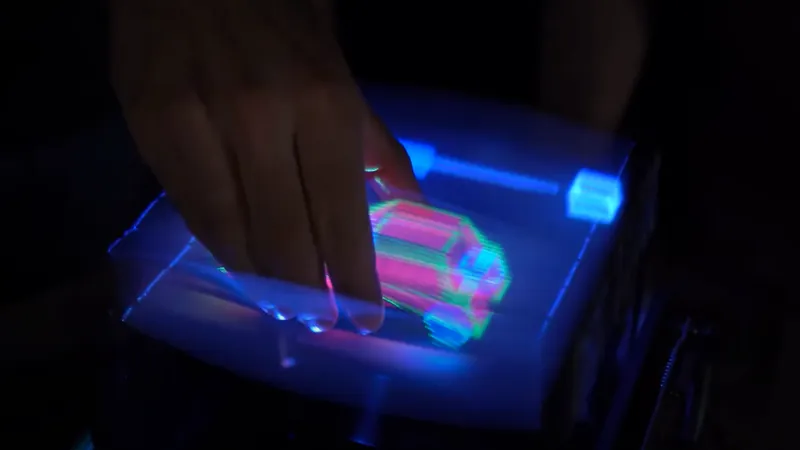
Touching the Future: Breakthrough 3D Holograms You Can Actually Manipulate!
2025-04-10
Author: Ling
A Game-Changer in Holographic Technology!
Imagine being able to touch, grab, and poke 3D holograms straight out of your favorite sci-fi movie. Well, today's your lucky day! Thanks to groundbreaking advancements in mixed reality technology, this extraordinary feat is no longer a figment of imagination.
The Science Behind the Magic
In a recent study released to the HAL open archive, researchers delved into the exciting world of volumetric displays, discovering the potential for us to interact with 3D holograms in a way that feels as natural as using a touchscreen. This innovative study shows how physical manipulation of holograms can be accomplished using elastic materials—a creative leap forward in holography!
Lead author Asier Marzo, a computer science professor at the Public University of Navarra, expressed the excitement surrounding this research: "We're used to tapping our phones or dragging files; it feels instinctive. This project allows for a similar interaction with 3D graphics, utilizing our natural abilities to perceive and manipulate in three dimensions."
Holograms: From Fantasy to Reality
While holograms have previously adorned public exhibitions and high-tech gadgets, the concept of interacting with them physically has mostly been confined to films like Marvel's "Iron Man." This research marks a pivotal moment, as it introduces the first method to manipulate 3D graphics in mid-air with our hands.
How Does it Work?
At the core of these innovative volumetric displays is a specially designed diffuser—a rapid-oscillating, usually rigid sheet displaying thousands of images that coalesce into stunning 3D graphics. However, the rigid structure poses risks—contact with a human hand while oscillating could lead to breakage or injury.
The solution? The researchers opted for flexible materials (details still under wraps!) that can be safely touched without compromising the holographic display. They've also tackled the issue of the elastic materials deforming upon contact through clever image correction techniques, ensuring holograms remain accurate and pristine.
Endless Possibilities Ahead!
Though still experimental, the potential applications for this technology are dazzling. Imagine a world where educational tools allow students to visualize and assemble complex engines or where museum-goers can interact with exhibits without cumbersome virtual reality headsets!
The researchers plan to showcase their findings at the CHI conference on Human Factors in Computing Systems in Japan, running from April 26 to May 1. Brace yourself for an exciting future filled with touchable 3D holograms that could transform how we learn, work, and interact with the world around us!

 Brasil (PT)
Brasil (PT)
 Canada (EN)
Canada (EN)
 Chile (ES)
Chile (ES)
 Česko (CS)
Česko (CS)
 대한민국 (KO)
대한민국 (KO)
 España (ES)
España (ES)
 France (FR)
France (FR)
 Hong Kong (EN)
Hong Kong (EN)
 Italia (IT)
Italia (IT)
 日本 (JA)
日本 (JA)
 Magyarország (HU)
Magyarország (HU)
 Norge (NO)
Norge (NO)
 Polska (PL)
Polska (PL)
 Schweiz (DE)
Schweiz (DE)
 Singapore (EN)
Singapore (EN)
 Sverige (SV)
Sverige (SV)
 Suomi (FI)
Suomi (FI)
 Türkiye (TR)
Türkiye (TR)
 الإمارات العربية المتحدة (AR)
الإمارات العربية المتحدة (AR)